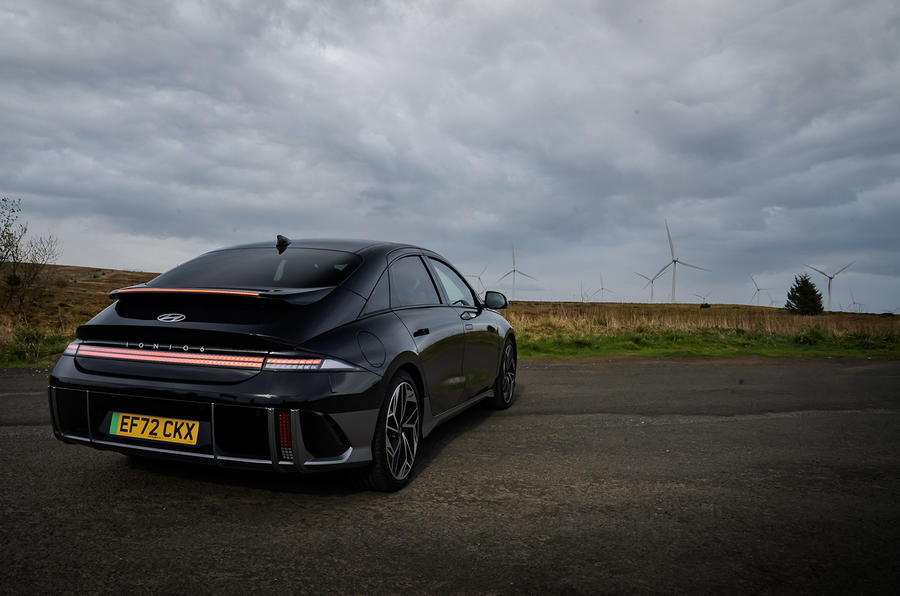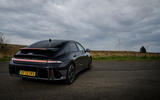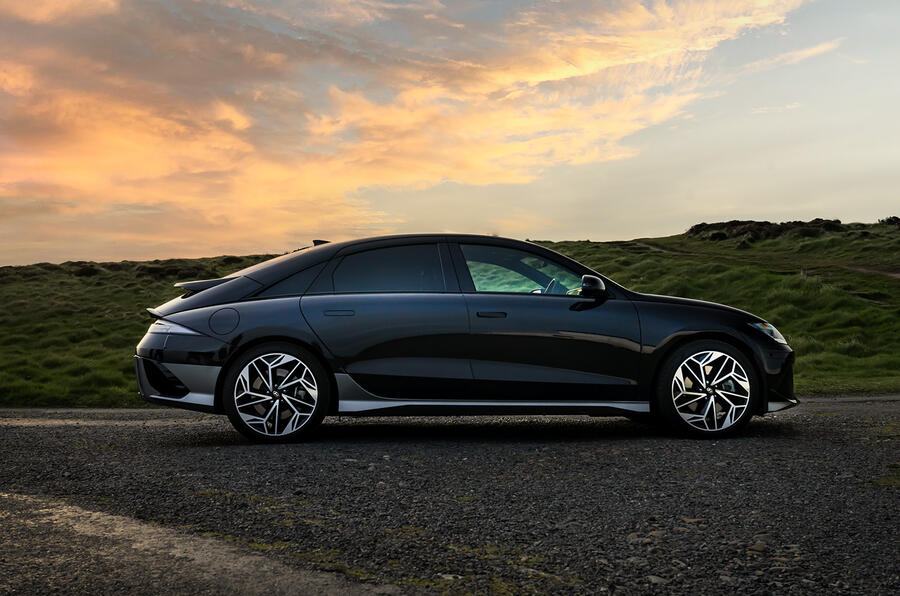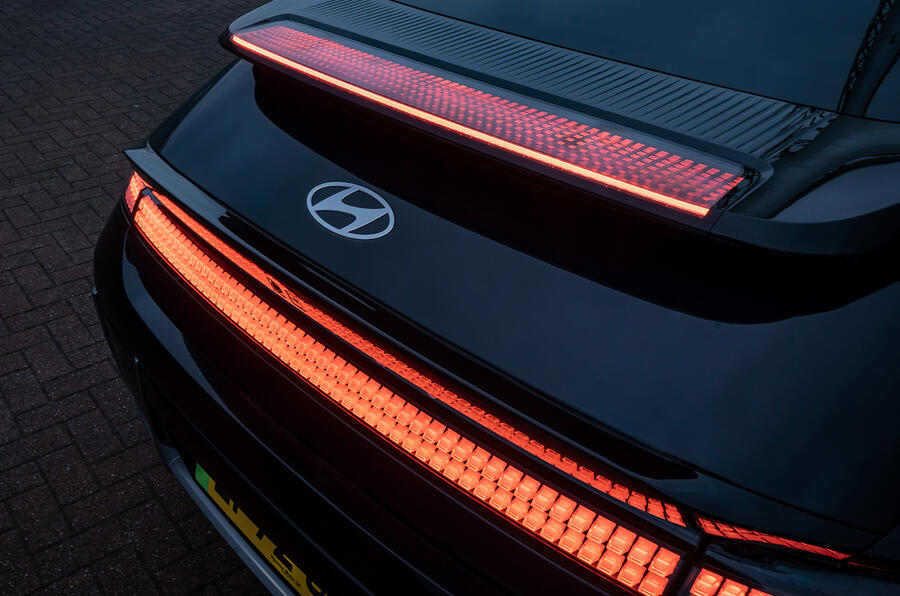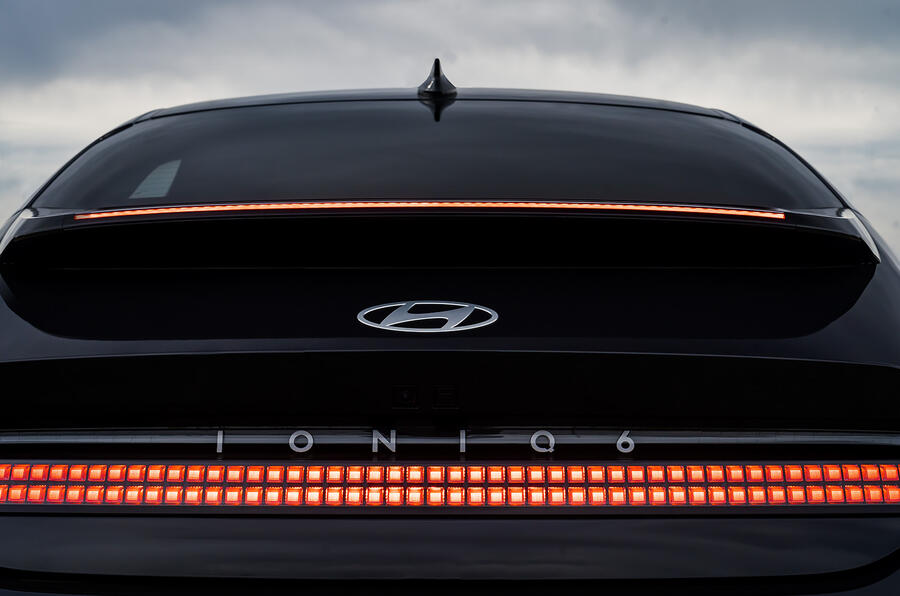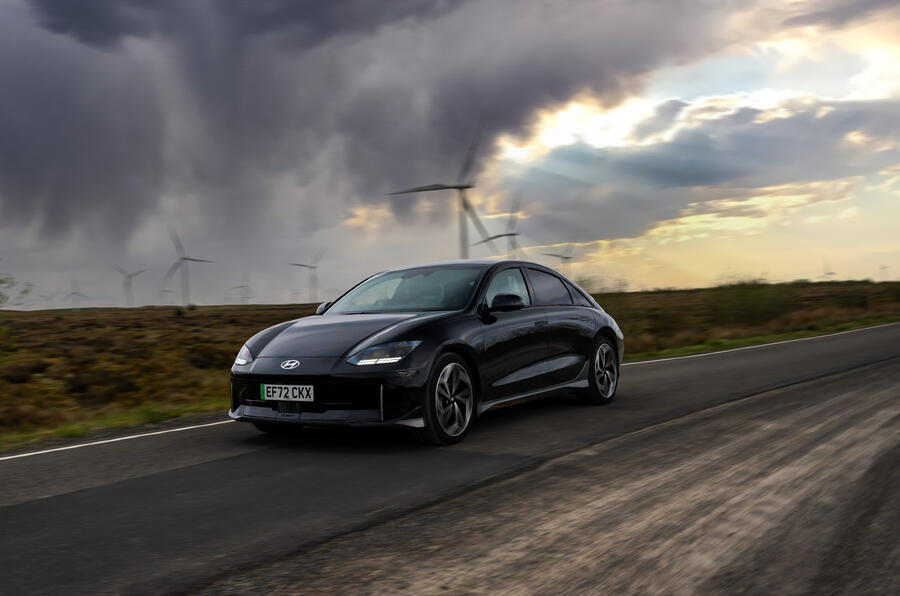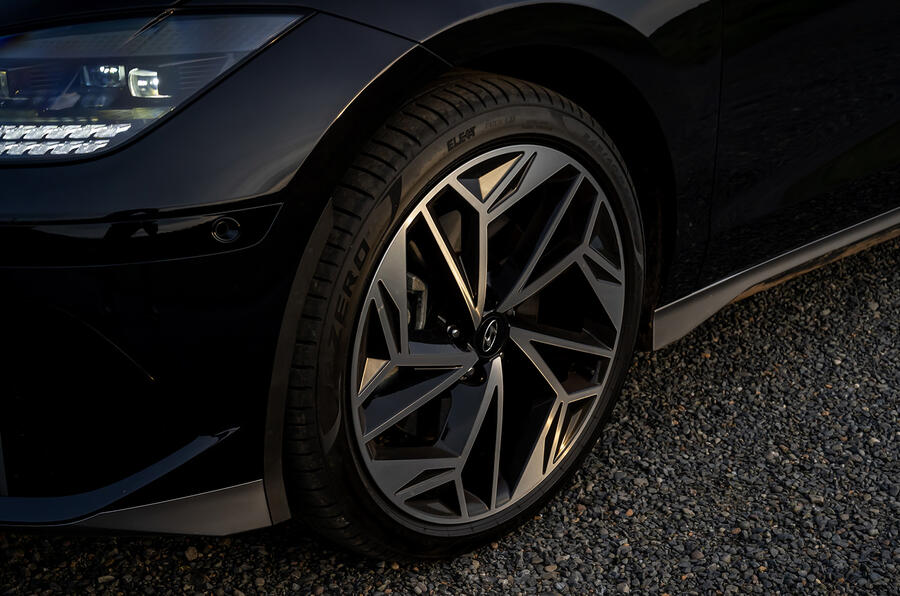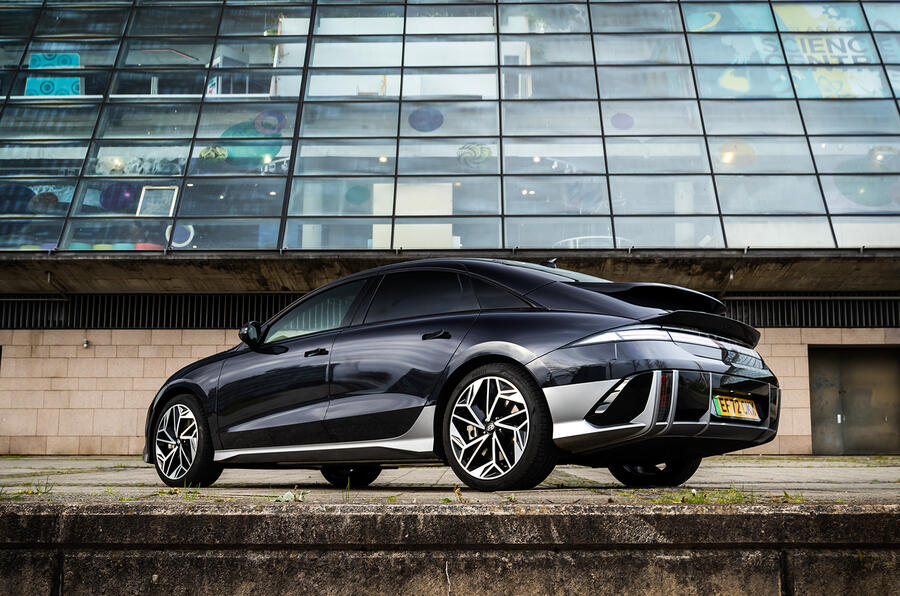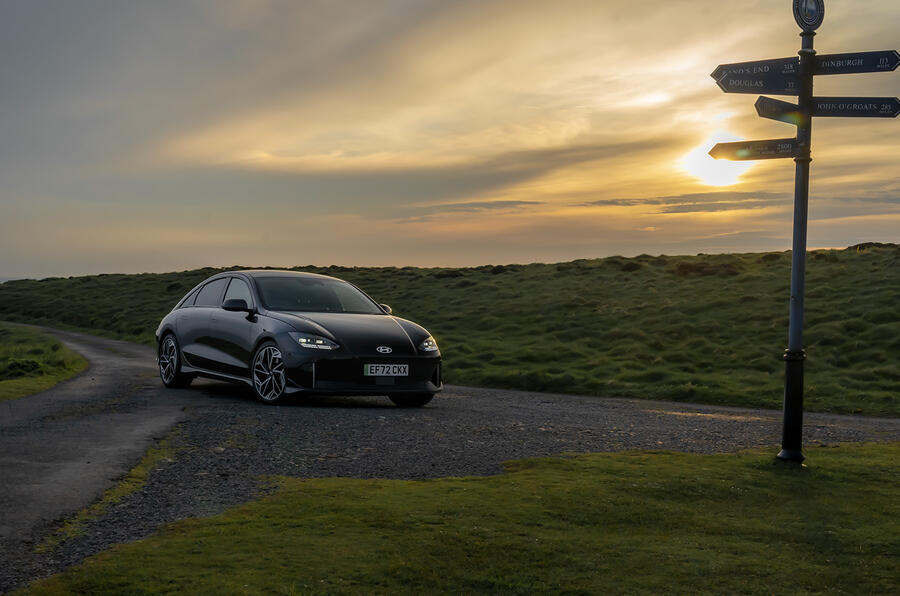The Hyundai IONIQ 6’s low-slung four-door saloon profile feels unmistakeably unique in the world of electric cars: defying convention and bucking the current trend for large all-electric SUVs. But there’s reason behind the rhyme.
Sleek automotive design isn’t solely about style and desire (although the IONIQ 6 scores highly on that front). It’s also about aerodynamic efficiency. Less drag and reduced air resistance means more range and less time spent charging, while also helping to minimise the wind noise that could be more noticeable with the ultra-quiet accompanying soundtrack of an electric powertrain.
That’s why the IONIQ 6’s graceful, streamlined form has been defined and shaped as much by purposeful function as it has been by aesthetics. In sport, competitors often talk about marginal gains: focusing in on lots of little improvements in efficiency that soon add up to more than the sum of their parts. It’s the same in aerodynamics. Lots of fractions of drag-reducing details that all add to the whole.
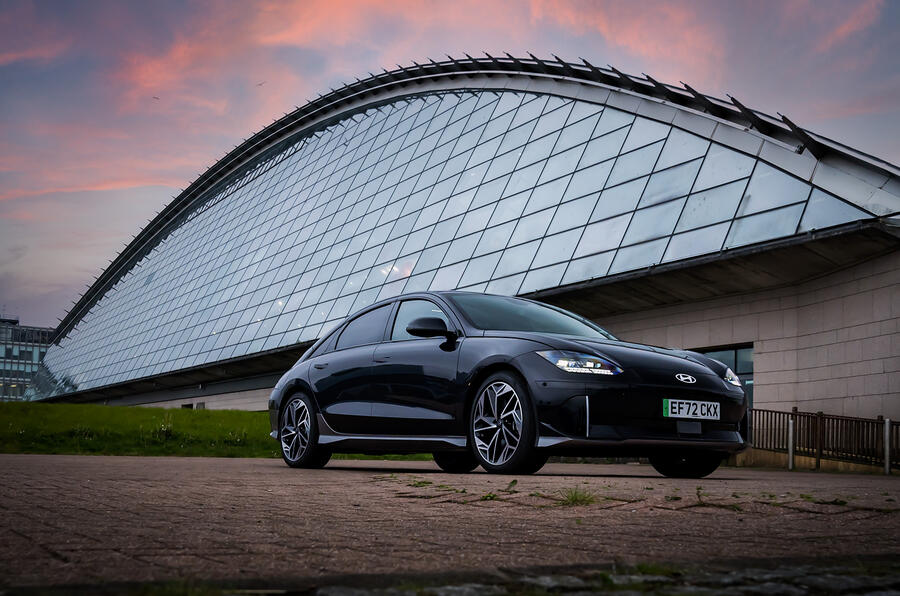
Hyundai’s designers looked to some of the most streamlined shapes in automotive and aircraft history and nature for inspiration, before using high-tech supercomputers and advanced virtual wind tunnels to shape and hone every detail of their design. The result: an astonishingly low drag coefficient for the IONIQ 6 of just 0.21 and up to 338 miles of all-electric range[1].
“In the electric vehicle era, air resistance is more important than any other performance,” says MIN Byung-hoon. Hyundai’s Director of Vehicle Performance Development. “Through their collective efforts, Hyundai’s aerodynamic engineers and designers have achieved a new benchmark for Hyundai.”
We recently took the IONIQ 6 on a journey across Scotland to find out how it’s sleeker and smarter in every way, and you can see how we got on in the video below. We've also broken down the key tech that helps the IONIQ 6 deliver its impressive range.But we also took the time to look under and around the carefully crafted and sculpted skin of the IONIQ 6 to explore some of its hidden aerodynamic secrets. Read on to learn more…

